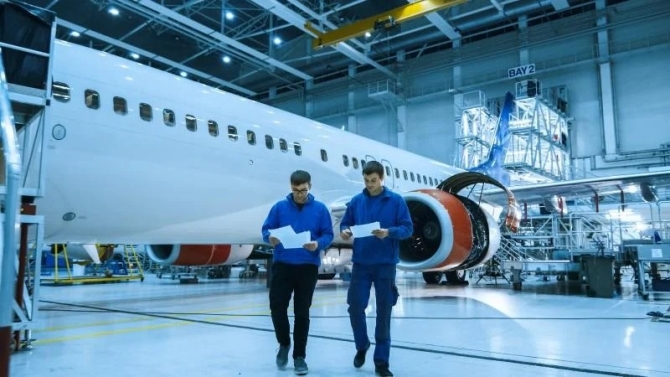Eliminating FOD In Aircraft Manufacturing and Maintenance
Click on image to download high resolution version
In one of the most regulated industries in the world, CribMaster explains why it is paramount that all forms of inventory, tools, equipment, and assets are properly maintained and always tracked. FOD (Foreign Object Debris/Damage) is a major pain point in the aerospace manufacturing and aircraft maintenance (MRO) industry, severely compromising safety, and reliability in flight operations. FOD is anything that is around or inside the aircraft and flight operations that does not belong there; FOD can cause severe damage to an aircraft, such as engine failure, and - at worst - loss of human life.
Unfortunately, during maintenance and repair of aircraft, cases of FOD usually occur due to poor inventory usage and tool traceability. In fact, FOD is estimated to cost the industry a massive $14.5 billion (£13 billion) per year in direct and indirect costs. Direct costs are all maintenance-related expenditures to repair the damages caused by FOD. Indirect costs include scheduled disruptions, additional unplanned work by employees, aircraft grounded in the maintenance hangar longer than planned, and fatalities.
The Evolution of Tool Control to Prevent FOD
Most airports and airline operators have realized the importance of FOD prevention, which has led to rapid advances in tool control management and accountability.
A successful FOD prevention programme in MRO, for example, can be achieved by having reliable processes in place along with the implementation of a tool control and asset tracking system.
There are a wide variety of FOD prevention systems available, and they vary greatly in the level of capabilities they provide for effective tool management and tool accountability to actively prevent FOD incidents. An entry- level system utilizes "Smart Cabinets" for tool storage, which are only accessible to employees who have the right level of authentication to unlock the drawers via their employee badge. Once access is approved, they can then take the required tool for the job. At this point, you have traceability of who has taken what and whether it has been returned or not.
But what if a tool is not returned and is now missing?
How long can you afford to spend hunting for that tool to ensure it has not been left inside an aircraft or any other potentially hazardous work area? Maybe the missing tool was accidentally kicked under the workbench and is right under your nose. When these scenarios arise, time is wasted, and losses are incurred as an aircraft is grounded until the missing asset is found by manually searching the premises.
Elaborating on this, Scott Dugdale, General Manager (Europe) at CribMaster, says, "Your FOD prevention system needs to have the ability in real time to track tools out on the maintenance shop floor. Your tool tracking can't stop at the point-of-use, that is, when it was issued from the smart cabinet. If you are unable to effectively track your assets in the event of a loss, then you still have a higher risk of FOD occurring, or at best, a very time-consuming and costly treasure hunt on your hands."
Advanced and effective systems for true end-to-end FOD prevention have automated tool tracking systems with wireless RFID tags, smart tool storage, and customized software to identify, trace, and control tools in real time throughout their workflow and lifecycle.
Automated tool control or smart access cabinet solutions from market leaders such as CribMaster deploy tool control RFID systems. Utilizing passive RFID technology and advanced software, CribMaster's solutions can detect RFID-tagged tools and assets when they are stored in the cabinet, once they are issued and used on the shop floor, and even when they are lost.
CribMaster helps aircraft manufacturing and maintenance teams enable tool tracking in real time to drive safety, efficiency, and digitization.
Source: CribMaster

